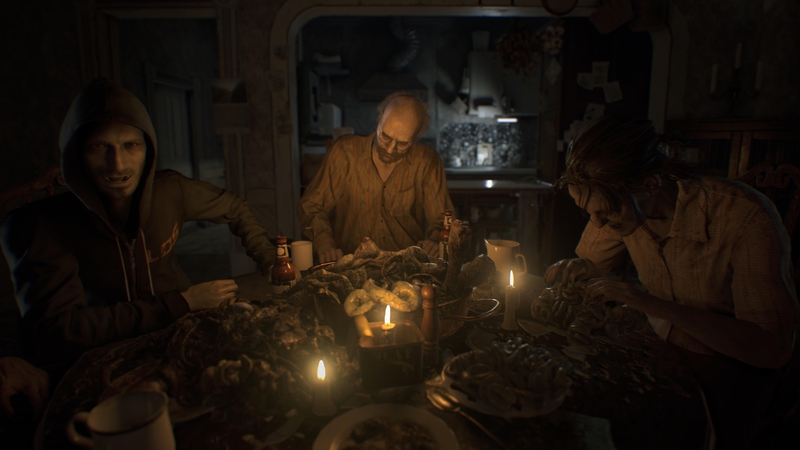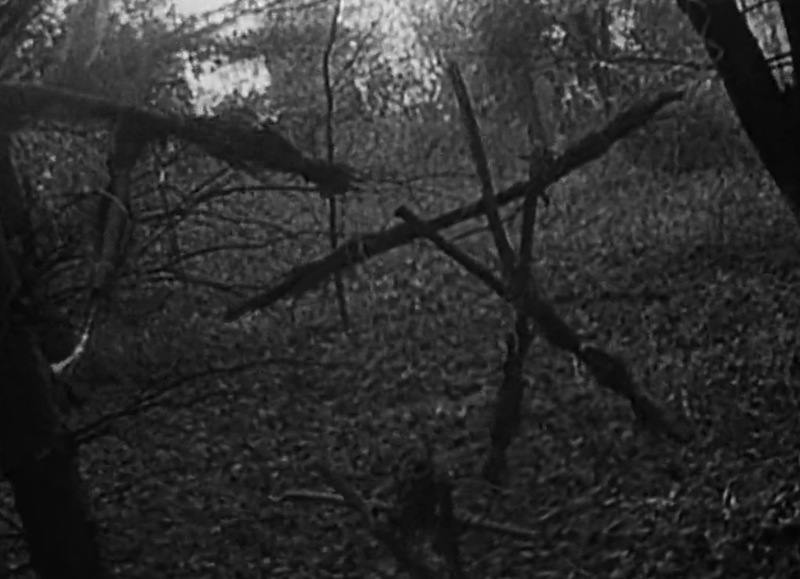There's something to be said about just how much the perspective of a story can impact its effect on audiences. Think about a chase scene in a horror movie: do you find it scarier to watch the events unfold as if you're a third-party onlooker? How about through the eyes of the victim? Or perhaps, as Hitchcock's famous shower scene has demonstrated, maybe even the killer's perspective is most effective? Point of view can make or break the most vital aspects of horror. The question is, when it comes to specific instances like the first-person point of view (FPV), is it more effective when employed by one medium over the other?
Capcom's Resident Evil series is a great case study of the varying usage of perspective in genre video games. Its original title debuted in 1996, throwing players into a cramped mansion full of monsters with tank controls and a birds-eye point of view. While Capcom initially wanted Resident Evil to be played via a first-person point of view, it instead opted for a format in which each room had different angled third-person "shots" to navigate characters through. It leveraged this perspective to lean into the notion of "survival horror." The format followed in each mainline proceeding game in the series until Resident Evil 4 famously shook up its formula.
Resident Evil 4's over-the-shoulder perspective (which inspired countless games to this day) was a proven net success. Still, it also led to a polarizing inflection point for the series. Suddenly, Resident Evil looked more like an action-oriented "shoot 'em up" series to many, with people claiming that the series was losing track of its survival-horror roots. Enter Resident Evil 7: Biohazard. RE7 was the mainline series' first foray into first-person perspective, which seemed like a considerable risk for a series that appeared to be losing its footing at the time, but people collectively agreed that it was the series' return to form. Resident Evil was "scary" again.

Resident Evil 7's approach to first-person perspective was even further augmented and popularized by its integration of VR gameplay, leading it to be often lauded as the scariest video game of all time. Resident Evil 7 is just one example of many horror video games that have found success with a first-person point of view. You may wonder: what would the film equivalent be aside from the occasional POV shot of a killer stalking their victims à la Michael Myers or Black Christmas' Billy?
"VR is the closest [audiences can get to experiencing horror films in FPV], but that's essentially the same as found-footage," says Brad Miska, founder of Bloody Disgusting, and producer of the hit found-footage V/H/S series. "Most viewers are used to traditional perspectives and editing, which means seasoned horror fans become a bit desensitized to it. We all know a scare is coming, and brace for it. With found-footage or FPV, a good director can toy with seasoned horror fans through blocking and editing."

While the exact inception of found-footage is up for debate, the subgenre arguably became a hit with The Blair Witch Project in 1999. The film capitalized on an unconventional marketing campaign leaning into the idea that it was comprised of raw footage centered on real events. Since then, the format has become ubiquitous to horror films, bringing a new and unique perspective in FPV to the big screen that can't be explored much otherwise. But have FPV horror video games helped influence and pave the way for this genre? "Personally," says Miska, "I think filmmakers are relating the perspective more to the rise in handheld technology in response to how we film everything."

On the flip side, FPV horror games are often inspired by horror films. Endnight Games' hit FPV survival horror series, The Forest, has been noted to be inspired by 1980's Cannibal Holocaust, which is often referred to as the first instance of a found-footage in film history. Perhaps one of the most ambitious upcoming projects that completely blurs the lines of FPV in video games and films is Visible Games' Ghosts–a live-action video game where the player's choices impact the outcome in real-time. From Ghosts' Kickstarter page, "The game takes inspiration from the works of Manx screenwriter Nigel Kneale and the blurring of fact and fiction from the found footage movies of the last 25 years," and is a clear indicator of how intertwined the futures of video games and films are.
FPV is one of the few frontiers that video games and film seem to be striking new ground on simultaneously. "Video games are chasing film and TV in terms of realism, and film and TV are chasing the storytelling of video games," says Miska. With new ventures opened up with VR and the continually blurred lines across mediums with projects like Ghosts, FPV may be the most innovative space that both mediums currently share. And while one medium may be sapping inspiration from its counterpart more than the other today, the pendulum will likely swing the opposite direction as they both continue to innovate tomorrow.






